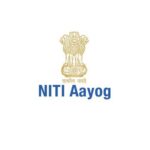India’s policy think tank NITI Aayog has released a sweeping blueprint to leverage artificial intelligence (AI) for inclusive growth, aiming to integrate nearly 490 million informal workers into the formal economy by 2047. The report, Roadmap on AI for Inclusive Societal Development, envisions a national mission—Digital ShramSetu—that uses AI, blockchain, and immersive learning to empower workers long excluded from social protection and productivity gains.
But while the vision aligns with India’s Viksit Bharat 2047 agenda of a $30-trillion economy and high-income status, the document exposes stark realities: the informal sector still accounts for 90 per cent of India’s workforce and nearly half its GDP. Productivity among informal workers is barely $5 per hour—less than half the national average—and women’s participation remains 37 per cent, far below the global mean of 47 per cent.
Analysts say that unless these systemic gaps—trust, skilling, and access—are addressed through robust institutional mechanisms and large-scale investment, the AI revolution could deepen inequality rather than dissolve it.
A Moral and Economic Imperative
The report’s premise is blunt: India’s development story cannot be “Viksit” if it excludes its largest labor bloc. “For India, the challenge is not just to deploy AI—it is to make AI matter in the lives of millions who have historically been on the margins of formal development pathways,” NITI Aayog CEO B.V.R. Subrahmanyam wrote in the foreword.
From health aides in Rajkot to carpenters in Delhi, the roadmap grounds its proposals in lived experiences of workers who remain digitally invisible—without contracts, credentials, or credit access. It calls for a “trust infrastructure” where verifiable digital identities and smart contracts guarantee payments, social benefits, and financial inclusion.
The envisioned Digital ShramSetu Mission proposes to unify disparate databases such as Aadhaar, e-Shram, and UDYAM, creating a federated ecosystem of worker credentials. This, NITI Aayog argues, would “dismantle systemic barriers and enable inclusion at a scale the world has never witnessed.”
However, economists caution that while India’s digital public infrastructure (DPI)—from Aadhaar to UPI—has transformed financial inclusion, replicating that success in the informal economy is far more complex. “Digital rails alone can’t formalize labor,” said a policy expert at the Indian Council for Research on International Economic Relations. “It requires legal frameworks, worker protections, and portable benefits—things AI can assist but not replace.”
The Digital Divide Within Inclusion
The roadmap recognizes that access is the first barrier. Many informal workers own smartphones but remain digitally excluded due to language, literacy, or design constraints. The report’s persona-based analysis profiles workers like Samar, a carpenter in Delhi who finds government portals unusable because they are text-heavy, and Lata, a handloom weaver in Lucknow who lacks adaptive skilling opportunities.
To address this, NITI Aayog proposes voice-first AI interfaces that respond in regional languages, AI-powered knowledge systems for on-demand skilling, and immersive AR training to bridge capability gaps. These technologies, it claims, could make government schemes and digital marketplaces universally accessible by 2035.
Yet, the vision depends on assumptions that remain aspirational: near-universal 5G access, a 30 per cent annual decline in hardware costs, interoperable data ecosystems, and regulatory agility. While India’s digital infrastructure has expanded rapidly, rural connectivity and language inclusivity remain inconsistent. Only 48 per cent of informal workers currently have access to social protection schemes, and less than a quarter possess functional digital literacy.
“Voice-based AI can democratize access, but training datasets and models must reflect India’s linguistic and occupational diversity,” said a senior researcher at IIT Madras. “Otherwise, inclusion will remain a slogan.”
Productivity vs Precarity
India’s informal workers contribute roughly 45 per cent of GDP, yet their average annual income hovers around $1,800. NITI Aayog estimates that with AI-led productivity growth, per capita income in this segment could rise to $14,500 by 2047—an almost eightfold increase.
The roadmap predicts that AI-enabled diagnostics, robotics, and IoT tools could transform high-risk, low-yield sectors such as agriculture and construction. For instance, a farmer in Odisha could deploy swarm robots for precision sowing, while an electrician in Patna could use AI visual diagnostics to pre-assess faults and hazards.
These illustrations highlight technology’s potential to increase output and safety. But they also underscore the risk of a dual-speed economy where the digital-savvy few advance while millions remain trapped in manual labor.
“Without robust financing models, AI-enabled tools will remain prototypes for pilots, not instruments of mass empowerment,” said Romal Shetty, CEO of Deloitte South Asia, who co-authored the report.
The Cost of Delay
The roadmap warns that India’s current 6.3 per cent GDP growth trajectory will yield a $15.3 trillion economy by 2047—barely half the Viksit Bharat target. Accelerating growth to around 10 per cent, it argues, would require leveraging frontier technologies to integrate informal workers into formal value chains.
The report frames inaction as costly: “Delayed action would mean leaving millions behind and weakening our development trajectory.” It points to the risk of widening inequality if AI adoption remains concentrated in capital-intensive sectors.
Still, the transition demands far more than technological optimism. Legal ambiguity around gig and informal work, limited interoperability between state databases, and fragmented skilling schemes continue to impede scale.
“India has world-class digital infrastructure but weak institutional plumbing,” said an economist with the International Labor Organization. “Formalization through AI must go hand in hand with legal recognition and social protection reform.”
Digital ShramSetu: Blueprint or Buzzword?
At the core of the roadmap lies the proposed Mission Digital ShramSetu, a centralized program modeled after Digital India. Chaired by the Prime Minister, it would coordinate across ministries—Labor, Skill Development, IT—and partner with states, startups, and civil society.
Its multi-tiered structure includes six “capability teams” focused on technology strategy, data, partnerships, and regulation. Pilot programs in 8–10 states between 2027 and 2029 would precede a national rollout.
Key deliverables include:
- A federated trust and credentialing system to verify work histories.
- Incentives for AI and robotics R&D under Make in India.
- AI ethics and data privacy frameworks under the new Data Protection Act.
- Impact evaluation dashboards to measure income, adoption, and social mobility.
However, critics argue that centralized governance may not address local realities. Labor markets are deeply regional, and most informal trades operate through caste, gender, or community networks. “A Delhi-designed digital mission must be flexible enough for Odisha’s farmers and Tamil Nadu’s weavers,” said a social policy analyst at Azim Premji University.
Governance, Risks and Regulation
The report lists potential risks—from inter-ministerial misalignment and funding delays to cybersecurity threats and supply chain vulnerabilities. It calls for agile regulation to legitimize smart contracts, protect gig workers, and ensure AI accountability.
Yet, India’s record on labor reform offers little reassurance. The long-pending labor codes remain only partially implemented, and most welfare schemes for informal workers struggle with data duplication and leakage.
“Digitization cannot substitute for political will,” said a senior trade union leader. “AI should not become a new excuse to privatize social responsibility.”
Still, the NITI roadmap represents a rare attempt to connect frontier technology with bottom-of-the-pyramid economics. By anchoring the informal workforce at the center of India’s AI strategy, it reframes inclusion not as welfare but as productivity.
A Cautious Optimism
India’s technological momentum—fueled by 1.2 billion digital IDs, a thriving startup ecosystem, and expanding 5G—gives credibility to NITI Aayog’s ambition. If implemented, Digital ShramSetu could turn AI from an elitist innovation into a development equalizer.
But the stakes are enormous. As the report itself concedes, “The coming years represent a critical window. Decisions made today will determine whether emerging technologies deepen inequalities or unlock a more equitable and resilient future of work.”
For now, the roadmap reads as both manifesto and mirror: a bold vision of an AI-powered, worker-centric India—and a stark reminder of how far the country still must travel to make technology truly inclusive.






